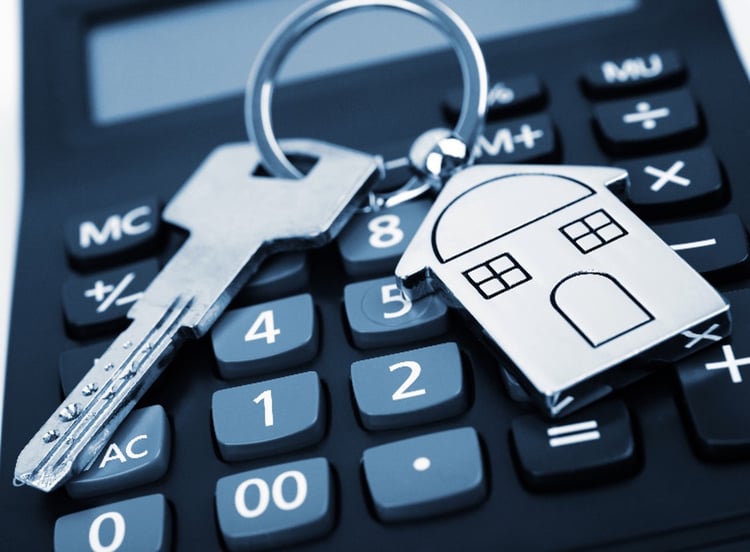There are three main approaches to valuation that appraisers and real estate investors use to determine the fair market price of a property: cost approach, income approach, and sales approach. In this article, we’ll explore the sales comparison approach to valuation.
Although the sales comparison method is typically used by people buying a primary residence, real estate investors also use the sales comparison approach to determine a fair offer price, even if the home is currently being used as a rental and generating income.
Key Takeaways
- Three approaches to valuing real estate are the cost, income, and sales approach.
- Sales approach compares a subject property to similar comparable properties that have recently sold.
- Also known as the SCA, the sales comparison approach takes into account property characteristics such as location, square footage, age, condition, lot size, and sale date.
What is the Sales Comparison Approach?
The American Society of Appraisers (ASA) defines the sales comparison approach to valuing property as:
A procedure to conclude an opinion of value for a property by comparing it with similar properties that have been sold or are for sale in the relevant marketplace by making adjustments to prices based on marketplace conditions and the properties’ characteristics of value.
The sales comparison approach (SCA) is frequently used by single-family rental home buyers and sellers to help determine if the property is priced at a fair market value.

How the Sales Comparison Approach Works
While individual appraisers may employ different methods in the SCA, there are several steps that every sales comparison approach takes into account:
1. Select property comparables
A good comparable property should have similar characteristics to the subject property being valued:
Location: Comparable properties should be as close to the subject property as possible, ideally in the same neighborhood. Neighborhood ratings and quality of school districts are two factors that can affect the value of a house from one area to another.
Square Footage: Size of a home is another important factor when selecting a comp. Although single-family rental home investors value a property based on the potential income generated, buyers generally should not pay more for a property than the fair market value per square foot.
Bedrooms/Bathrooms: The number of people who can live in a home also affects the potential value based on the neighborhood demographics. For example, a 2 bedroom/2 bathroom home in a neighborhood where all other homes are 3 bedroom/2 bathroom may be more difficult to rent or resell at a later date because the property isn’t the same as other nearby homes.
Age: If comparable homes are much newer or older than the subject property, the sales comparison approach can be less accurate. When possible, comparable properties should have a similar construction date to the subject property being valued.
Condition: Homes with recent updates like a new roof or swimming pool, or those with significant deferred maintenance will also make poor comparables. Comps should be in a similar condition to the property being appraised.
Lot Size: Some buyers see less value in a home on a large lot because of the additional landscaping and upkeep costs. Odd sized lots can also be problematic due to the amount of unusable space, even if they have a large amount of square footage. The best comps have lot sizes and configurations that are similar to the subject property.
Sales Date: Conditions in a real estate market can change quickly, andh recent home sales provide more value as comparables than those sold in the past. Selecting comparable properties with sales dates as recent as possible will help to yield the most accurate SCA.
2. Adjust comparable values
Every home is different, even within a brand new subdivision. For example, a comparable property might have more costly appliances than the subject home or could be located on a corner lot with more traffic and noise than a property on an interior lot.
To account for property differences, the value of the comparable needs to be adjusted by making a deduction or addition to the comp’s price to match the subject property:
- Deduct from the comparable’s value if it has a superior feature.
- Add to the comparable’s value if it has an inferior feature.
If the comparable home has a better feature than the subject property (like an extra half bathroom), the value of the comp is deducted. On the other hand, if a comparable property has an inferior feature compared to the subject property (such as an older HVAC), the price of the comparable property is adjusted upward.
3. Estimate subject property value
Once comparable values are adjusted to more closely match the subject property, the final step in an SCA is to conduct a weighted analysis.
Comps with the fewest adjustments are generally given more weight or greater influence on the price of the subject property. That’s because the more adjustments that are made to a comp, the larger the risk that an adjustment error may skew the value of the subject property.
When weighting each comparable, attention should be paid to:
- Dollar value of each adjustment.
- Total value change of all of the adjustments combined.
- Number of adjustments made to each comp.
Example of the Sales Comparison Approach
Now let’s look at a simple example of how to use the sales comparison approach to value a home.
After selecting three comparable homes that are most similar to the subject property, a chart is created to list the main characteristics of each home:
| Subject | Comp #1 | Comp #2 | Comp #3 | |
| Price | $150,000 | $140,000 | $160,000 | |
| Sale Date | 2 weeks ago | 1 month ago | 1 week ago | |
| Sq. Footage | 1,500 | 1,600 | 1,500 | 1,550 |
| Bedrooms | 3 | 4 | 3 | 3 |
| Bathrooms | 2.5 | 3.5 | 2 | 2 |
| Garage | 2-car | 2-car | 2-car | 2-car |
| Condition | Good | Worse | Worse | Good |
| Lot Size (sq ft) | 6,000 | 7,000 | 6,000 | 5,500 |
Next, estimated values are assigned to each feature to increase or decrease the value of the comps compared to the subject home:
| Item | Value |
| Additional sq ft | $100 |
| Bedroom | $5,000 |
| Bathroom | $3,000 |
| Improve Condition | $4,500 |
| Additional Lot Size (per sq ft) | $1 |
Then, the chart is revised to factor in the total adjustments to each comparable, and to adjust the sales price of each comp. If a comparable has a superior feature the value is deducted from the comp, and if the comparable has an inferior feature value is added to the comp:
| Subject | Comp #1 | Comp #2 | Comp #3 | |
| Price | $150,000 | $140,000 | $160,000 | |
| Sale Date | 2 weeks ago | 1 month ago | 1 week ago | |
| Sq. Footage | 1,500 | 1,600 | 1,500 | 1,550 |
| -$10,000 | -$5,000 | |||
| Bedrooms | 3 | 4 | 3 | 3 |
| -$5,000 | ||||
| Bathrooms | 2.5 | 3.5 | 2 | 2 |
| -$3,000 | +$1,500 | +$1,500 | ||
| Garage | 2-car | 2-car | 2-car | 2-car |
| Condition | Good | Worse | Worse | Good |
| +$4,500 | +$4,500 | |||
| Lot Size (sq ft) | 6,000 | 7,000 | 6,000 | 5,500 |
| -$1,000 | +$500 | |||
| Total Adjustment | -$14,500 | +$6,000 | -$3,000 |
Based on the adjusted sales prices of the comps, the subject property could have a fair market value between $135,500 - $157,000.
However, Comp #2 has fewer adjustments and Comp #3 has the most recent sale date. By giving these last two comps more weighting, a more accurate valuation of the subject property could be in the $146,000 - $157,000 price range at the time the sales comparison approach was done.

Other Common Ways to Value Real Estate
In addition to the sales comparison approach, there are two other typical ways to run a real estate appraisal:
Cost Approach
The cost approach values a home based on the projected cost to build the same home from the ground up, after adjusting for the current condition of the subject property.
According to HomeGuide, the average cost to build a house is between $100 and $155 per square foot, depending on the location, size, and design of the home.
Based on the cost approach, our 1,500 square foot subject property is valued between $150,000 - $232,500.
Income Approach
The income approach for determining value is commonly used in commercial real estate and with income-producing residential rental property. Property value using the income approach is determined by using the current or projected net operating income (NOI) and the capitalization rate for similar homes in the same area.
For example, assume our subject property is generating a rental income of $1,600 per month and operating expenses (excluding the mortgage payment) are running $800 per month. By subtracting the annual operating expenses of $9,600 from the annual rental income of $19,200, the calculated NOI is $9,600 per year.
If the market cap rate for similar 1,500 square foot, 3-bedroom/2.5-bathroom single-family rental homes is 6%, the estimated value of the subject property using the income approach and cap rate formula is:
- Cap Rate = NOI / Property Value
- Property Value = NOI / Cap Rate
- $9,600 NOI / 6% Cap Rate = $160,000 value of subject property using the income approach
Combined Approach
By using all three methods of valuing real estate, an investor can more accurately determine what the subject home may be worth as a single-family rental home:
| Real Estate Valuation Method | Value of Subject Property |
| Sales comparison approach | $146,000 - $157,000 |
| Cost approach | $150,000 - $232,500 |
| Income approach | $160,000 |
After reviewing the estimated values from all three methods, an investor may determine that the fair market value of the single-family subject property is closer to $157,000.









